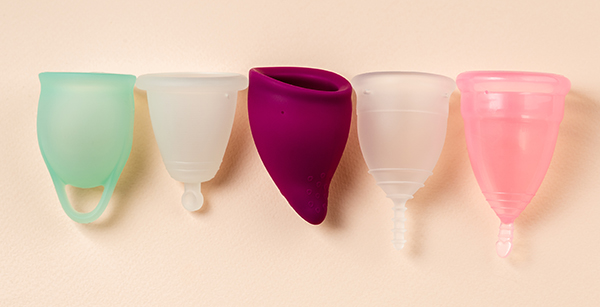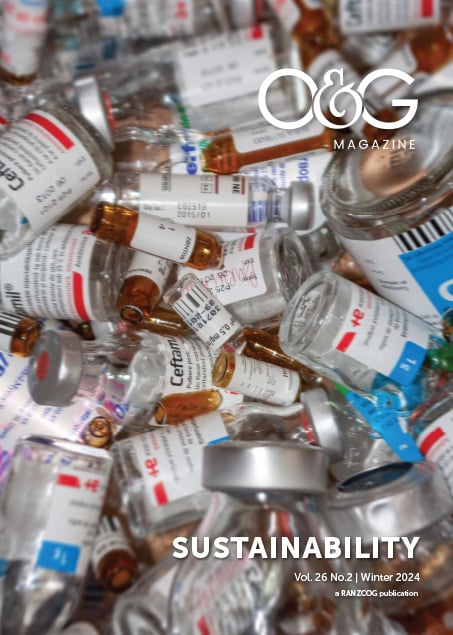Every month around the world, 1.8 billion people menstruate and to accommodate for this, a staggering quantity of disposable menstrual products are used. Annually in Australia, 300 million tampons and 500 million pads are sold, and 45 billion period products are discarded each year worldwide1. Concurrently, there is growing access to period products in developing nations, a positive change for period equity, but one that is creating a new waste and pollution issue on an enormous scale. With the current world population at 8 billion, set to peak at 10.4 billion by 20802, the demand for menstrual products will rise further over our lifetimes. Women and girls around the world have the right to effective, safe and affordable menstrual products but we also must think of how to do this sustainably.
When considering the environmental impact of period products, we need to consider the raw materials for the products and their packaging, the energy and water used in the manufacturing process, the carbon footprint of product distribution and sales, how these products are disposed of and what happens after they are put in landfill.
Non-organic tampons are usually made from rayon and viscose and non-organic pads are usually 90% plastic with a top layer that is a plastic polymer such as polyethylene and a core that may be cellulose but may also be a super absorbent polymer or “super foam”. Breakdown time is six months for a cotton tampon and a projected 500 years for non-organic pads. In the process of degradation, plastic-based menstrual items release breakdown products into water sources and landfill, including microplastics (small pieces of plastic less than 5mm in size) and then ultimately to nanoplastics, which can be found inside cells and can bioaccumulate. Both microplastics and nanoplastics are a recognised major threat to marine and human health. Products that don’t make it to landfill can be washed into oceans and onto beaches. Plastic tampon applicators for example are a recognised pollutant on beaches and can also commonly be found in sea bird stomachs3.
Reusable menstrual products including menstrual cups, period underwear and reusable pads have recently become available for women on a large scale with growing uptake, particularly in younger women. In a 2023 survey of 600 Victorian women aged 15-29, 24% had used period underwear for their last period and 17% a menstrual cup4. This bodes well for the environment; in an analysis across US, France and India, menstrual cups had the lowest impact score compared to non-organic products; period underwear placed second. Non-organic pads had the worse score5.
As for finances, reusable products have a higher initial outlay but will save money in the long term. Cups cost between $AUD30-80 but last on average two to five years and a pair of period underwear costs between $AUD25-50, lasting six months to two years. Given the average woman spends $12,800 in their lifetime on disposable period products, a switch to cups would come with big savings. Seeing as gynaecologists are experts in periods, let’s take a deep dive into these re-useable products.
Period underwear
Wearers can bleed directly onto their waterproof and highly absorbent period underwear6, without the need for a bulky pad. They are worn for up to 6-12 hours whereupon they are rinsed and can then be put into a normal washing machine cycle. There are various absorbencies and styles including bike-short style for very heavy flow or at night, and swim and gym wear which offers many practical advantages for women. An added bonus – they are great for women managing with urinary incontinence too. Given the synthetic fibres in period underwear, breakdown time can be long and similar issues of micro and nanoplastics arise.
Menstrual cups
Menstrual cups are reusable silicone or plastic cups around 4cm wide and 6cm long that sit in the vagina, cupping the cervix to collect blood rather than absorbing it. They have a small tail on the distal end for removal, whereupon the blood is emptied down the toilet or sink, and the cup is washed with warm soapy water. Some cups are smaller and very pliable for use in women who haven’t been sexually active. Plastic cups can be recycled at the end of their lifetime, silicone cups can’t be.
Cups are practical for menorrhagia. While a regular pad or tampon can hold 5ml of blood and a super pad or tampon 10ml, a cup can hold 10-40ml, meaning it can be changed once or twice a day. This means fewer interruptions to a school or workday with fewer embarrassing accidents. The maximum recommended duration of insertion is 12 hours for hygiene reasons7.
Cups come in a variety of dimensions and volumes, to accommodate different anatomy and in 2019, there were 199 different cups available for sale1. Women can do a short quiz (there’s lots online) to help them find the right cup for them. Even with the best fitting cup, it can take a few attempts to get it sitting correctly and comfortably.

Menstrual cups come in varying shapes and sizes. Photo: Adobe Stock
A menstrual disc is very similar in concept, though is shallower and wider without the tail on the distal end and allows women to have intercourse while on their period. A 2019 systematic review in The Lancet analysed the available literature on menstrual cups and found they are an effective and safe option. 2-13% of users report leaks, usually with heavy menses. Rare complications include vaginal pain, urinary complaints, skin rashes/allergy that require clinician assistance to remove a device, as well as a rate of toxic shock syndrome (TSS) similar to tampon use at 1/100,000 users, though one study reported a higher rate at 0.15%1,8.
A 2024 statement from the Therapeutic Guidelines of Australia now mandates information on TSS appears on the packaging of all menstrual cups sold7. There are no clear guidelines on the need to sterilise cups to reduce this risk of TSS, but it is common sense to consider this. Cup sterilisers can be purchased to sterilise a cup in a microwave, though a 2022 study looked at different cleaning techniques and found washing with soap then steeping in a cup of boiled water (with a small plate for a lid) for five minutes was equally as effective in getting bacterial colony forming units to zero9. Practically, I recommend to my patients sterilising their cup(s) before and after each period at the very least.
Finally, there is likely an association between IUD expulsion and menstrual cup use. A randomised controlled trial of 200 cup users with Copper IUDs over a two-year period found an odds ratio of 3.8 for expulsion when a cup is used concomitantly10, though a 2023 systematic review reviewed other papers with conflicting data, overall reporting a “probable association” needing more research11. Given the rising use of cups in young women, it seems prudent to add this to patient information after IUD insertion.
Menstrual health and hygiene are inextricably linked to environmental issues, climate change and sustainability. Considering a switch (for us or our patients) to reusable products such as menstrual cups and period underwear will be good for both people and the planet.
Dr Alice Whittaker, MBBS, FRANZCOG, CHU Poitiers, France.
References
- Mouhanna et al, The Menstrual Cup: Menstrual Hygiene with less environmental impact, JAMA, 2023;329(13):1114-1115
- United Nations Population Division: World Population Prospects population.un.org/wpp/Graphs/
- Perpedy et al, A Study into Public Awareness of the Environmental Impact of Menstrual Products and Product Choice, Sustainability, 2019, 11, 47
- Ramsay et al, Reusable period products: use and perceptions among young people in Victoria, Australia, BMC Women’s Health, 23, 102.
- Fourcassier et al, Menstrual Products: A comparable Life Cycle Assessment, Cleaner Environment Systems, Vol 7, Dec 22
- Period Pants 101: Everything a parent needs to know about period proof underwear sexedrescue.com/period-pants-for-girls
- Therapeutic Goods Australia, Regulation of Menstrual Cups Australia: Guidance, Version 2, Feb 2024
- Van Eijk et al, Menstrual cup use, leakage, acceptability, safety and availability: a systematic review and meta-analysis, Lancet Public Health, 4: e736-93, 2019
- Wunsch et al, In Vitro Study to Assess Effective Cleaning Techniques for Removing Staphylococcus aureus from Menstrual Cups, International Journal of Environmental Research and Public Health, 19:1450, 2022.
- Long J, Schreiber C, Creinin MD, et al. Menstrual Cup Use and Intrauterine Device Expulsion in a Copper Intrauterine Device Contraceptive Efficacy Trial [OP01-1B]. Obstet Gynaecol. 2020;135:1S.
- Bowman & Thwaites, Menstrual cup and risk of IUD expulsion – a systematic review, Contraception & Reproductive Medicine, 8:15, 2023





Leave a Reply